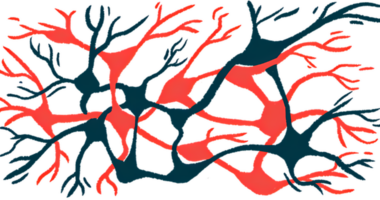Single cell therapy may help to ease disease severity in Parkinson’s
Benefits for patients seen during off periods in first meta-analysis

Homogenous cell therapy — treatments using only one cell type — may ease disease severity, lessen motor symptoms, and improve activities of daily living in people with Parkinson’s disease, according to a new systematic review.
These effects were observed during patients’ off periods, times when the medication wears off and symptoms return — particularly in patients who responded to levodopa treatment.
Moreover, these beneficial effects were found to be superior when the treatment involved cells from a donor instead of the patient’s own cells.
“Cell-therapies in PD [Parkinson’s disease] are not a stand-alone treatment but must always be considered in combination with established therapies,” the researchers wrote.
The study, “Cell-therapy for Parkinson’s disease: a systematic review and meta-analysis,” was published in the Journal of Translational Medicine.
Contradictory results seen to date for cell therapy studies in Parkinson’s
Parkinson’s disease is characterized by the dysfunction and death of nerve cells (neurons) that communicate with other neurons by releasing a chemical messenger called dopamine, in a part of the brain called the substantia nigra.
Given this specific loss of dopaminergic neurons, cell-based therapies focusing on the replacement and protection of these nerve cells have been considered an alternative for people with Parkinson’s disease.
However, despite promising preclinical studies, the results of clinical trials reported have been contradictory, and no meta-analysis of those results has been conducted so far. A meta-analysis is a statistical method used to combine and analyze data from multiple independent studies on a particular topic.
According to researchers, “a meta-analysis is therefore necessary to provide an overall assessment of the safety and efficacy of cell therapy approaches in [Parkinson’s disease].”
Now, a team led by scientists in China conducted a systematic review and meta-analysis of published clinical trials that investigated cell- or tissue-based therapies for Parkinson’s disease.
Their search covered four databases: PubMed, Embase, Web of Science, and Cochrane. In total, 106 studies, all published before July 2023, were included.
Most of the studies, 89 in all, reported on transplants of tissue or mixed cell populations. The other 17 studies reported on transplants of homogenous cell populations, or those containing one cell type.
Further, 84 studies involved the transplant of tissues or cells from a human donor, known as allogeneic transplantation, while 17 involved so-called autologous transplants, which use a patient’s own cells. The other five studies covered transplants of tissues or cells from other species, called xenotransplantation.
Interestingly, the number of studies involving a single cell therapy increased during the last 10 years.
“Treatment with homogenous cell populations became a research focus after 2002 and the most frequently used treatment strategy in the recent decade,” the researchers wrote.
Almost all studies — 104 or 98% — reported on treatment efficacy, and 63 articles addressed treatment safety. Overall, 92 studies evaluated patients’ motor symptoms, while 18 examined nonmotor symptoms.
Of the studies reporting on transplants of homogenous cell populations, 11 studies including 210 patients were eligible for the meta-analysis, according to researchers.
More treatment benefits seen in patients responsive to levodopa
That meta-analysis showed a beneficial effect of this type of transplants on overall disease severity. Patients were monitored using the Unified Parkinson’s Disease Rating Scale (UPDRS), during an off state. The effect was seen at follow-ups at three, six, 12, and 24 months, but not at 36 months (three years) or later.
The treatments also were found to lessen disease severity when patients were responsive to medication at the 12-month follow-up. Most patients were responsive to levodopa — ranging from 61.6% to 100% — at different follow-ups.
Similar effects were observed regarding patients’ motor function. In this measure, the beneficial effects in the off state were observed through 36 months, or later. When patients were in the on state, motor function improved at the six- and 24-month follow-ups.
Cell therapy also was effective at improving activities of daily living during when patients were in the off state.
Among the studies analyzed, eight involved allogeneic (donor cell) transplants while three involved autologous (patients’ own cells) therapy. Allogeneic cells improved functional outcomes, easing disease disability and motor symptoms, and leading to gains in activities of daily living, in the off state at the last follow-up. When autologous cells were used, no beneficial effects were observed.
“Even though homogenous cell-therapy in general and allogeneic cells in particular showed positive effects on motor function in the ‘off’ state, autologous cell transplantation did not show such effects,” the researchers wrote.
Several types of cells were transplanted, including neural progenitor cells that give rise to neurons and other cells in the brain, and bone marrow or fetal stem cells that can give rise to multiple cell types. Specialized cells found in the retina, the light-sensitive tissue at the back of the eye, also were used for transplants.
All cell types were able to lessen overall disease severity, including motor symptoms, during the off state at the last follow-up.
More clinical trials needed to test all types of cell therapy in Parkinson’s
Both transplants into the basal ganglia (six studies), a part of the brain affected by Parkinson’s disease, and into other brain areas were effective in lessening motor symptoms in the off state. Transplants into the basal ganglia also lessened overall disease disability.
Although some studies reported an improvement in dopaminergic activity using different imaging methodologies, and suggested that cell therapy partially replaced dopaminergic neurons, the researchers noted that the limited number of studies and the small number of patients made it difficult to do a useful analysis of the imaging results for effectiveness.
Our results suggest modest yet clinically meaningful cell therapy effects in patients with [Parkinson’s disease] although definitive evidence must be provided by future double-blinded large-scale [randomized control trials].
Some studies also reported adverse events, including events associated with the surgical procedure. In two trials, one confirmed and four possible cases of graft-induced dyskinesia, or involuntary and often repetitive movements, were reported.
“Our results suggest modest yet clinically meaningful cell therapy effects in patients with [Parkinson’s disease] although definitive evidence must be provided by future double-blinded large-scale [randomized control trials],” the researchers wrote.
“These should also monitor the long-term safety of cell-based interventions for [Parkinson’s disease] while the optimal cell population and route of transplantation need to be defined,” the team added.









